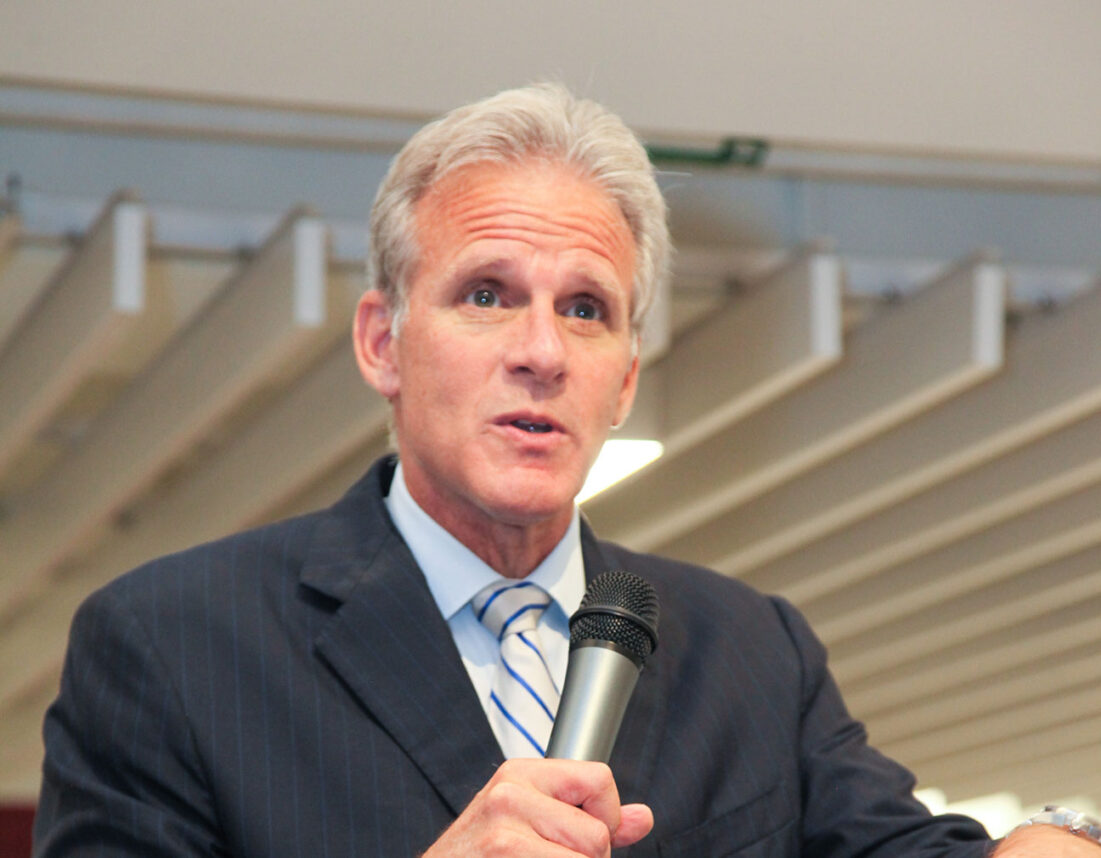In a recent roundtable interview, actress Natalie Portman revealed the method behind the melodramatic madness that subsumes “Black Swan.”
It began with her workout routine.
At the height of her training with New York City Ballet dancer Mary Helen Bowers, Portman was in toe-shoes five hours a day plus swimming a mile each morning. She was also on a strict diet; for months, she ate only carrots and almonds.
Such is the life of a dancer, she told journalist Amy Longsdorf: “You don’t drink. You don’t go out with friends. You don’t have much food. You are constantly putting your body through extreme pain.”
“I came to understand the self-flagellation of a ballet dancer.”
The rigors of Portman’s physical training clearly helped her descend into the abysmal depths of her character. There is a malevolent desperation to Nina’s madness, as the deprivations of her body mirror her inner-emptiness. Because she lacks both physical and emotional sustenance, she crumbles under the pressure.
You kind of want to grab Nina by the tutu and drag her to the nearest rabbi’s office. A little inner-dimension, please. But on the contrary, Portman said she modeled her character’s nature on examples of religious compulsion, and argued, perhaps rightly, that some religious impulses promote – or even require – obsessive behavior.
“Nina’s bulimic,” Portman said of her character. “And anorexia and bulimia are forms of OCD. Ballet really lends itself to that because there’s such a sense of ritual that goes along with dancing – the wrapping of the shoes everyday and the preparing of new shoes for every performance. It’s almost religious in nature. It’s almost like Jews putting on their Tefillin or Catholics with their Rosary Beads, and then [the dancers] have a godlike character in their director So I think Nina suffers from a sort of religious obsessive compulsion.”
Despite the ritualistic elements in a dancer’s life, or in the Hollywood actress preparing to portray her, Portman’s Nina comes up religiously short. If there’s nothing substantive driving the compulsive ritual, it’s merely ritual for ritual’s sake, or a melodramatic character for Oscar’s sake.
Portman never makes clear the motivation’s driving her character’s ambition. We see Nina unravel on the outside without any clue as to what’s going on on the inside. Why does she surrender herself entirely to the role? What does she think awaits her at the top?
A few years ago, when Paris Hilton was getting carted off to jail, Rabbi David Wolpe gave a sermon about the necessity of spiritual power. Hilton was arrested – not a pleasant thing, but not entirely life altering, obviously – and she completely fell apart. Remember the infamous paparazzi photo of her sobbing and snotty (in both senses) seen through the window of the police car?
“If you don’t cultivate inner-resources,” Wolpe said. “In times of crisis, you crumble.”
Portman’s Nina may have been destined to crumble, but wouldn’t it be nice if we cared?
Read more of Longsdorf’s interview with Portman here:
From the beginning of “Black Swan,” Nina has a loose grip on reality. Locked in a too-close relationship with her mother (Barbara Hershey), she begins to unravel after her company’s artistic director (Vincent Cassel) fires his star ballerina (Winona Ryder) and hands the leading role in “Swan Lake” over to her.
Nina’s problems are intensified when a new dancer named Lily (Mila Kunis) joins the company. The pair instantly begin a pas de deux of love and hate, which pushes Nina even closer to the brink. As one critic noted, the Darren Aronofsky-directed film resembles ” `Mommie Dearest’ meets `Repulsion’ meets `Single White Female.’”
Portman is in nearly every scene of the drama and it’s her out-on-a-ledge performance which is earning plenty of Oscar buzz. Asked how she’d feel about a second nomination (following her nod for “Closer”), the actress, 29, says, “it would be a great, great honor.
“The best thing that you can hope for when you make a movie and you put your soul into it, like all of us have done, is that people respond to it well. The fact that audiences have come away moved and excited and entertained and stimulated is extraordinarily flattering.”
If awards were given out for the most harrowing preparation for a performance, Portman would surely pirouette to the podium on Oscar night. A veteran of eight years of dance training (from the ages of 4-12), Portman still needed to work out for nearly 14 months to into tip-top shape.






















 More news and opinions than at a Shabbat dinner, right in your inbox.
More news and opinions than at a Shabbat dinner, right in your inbox.